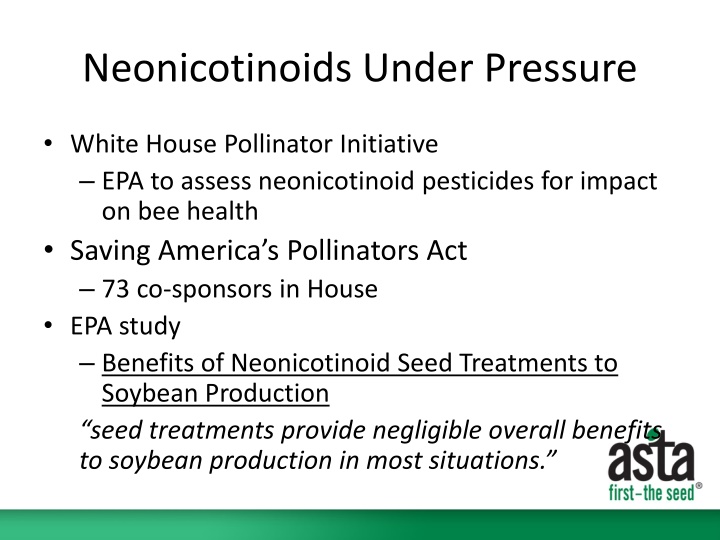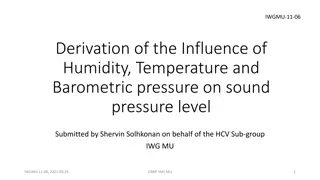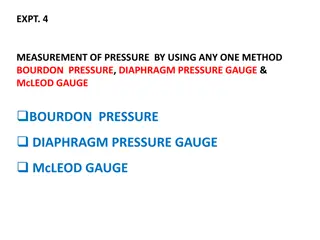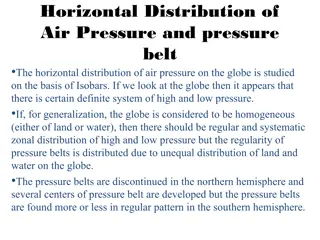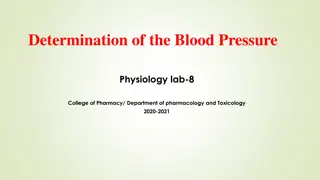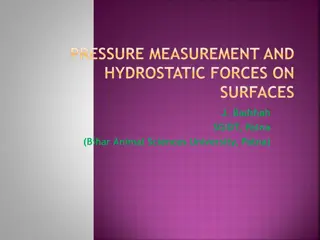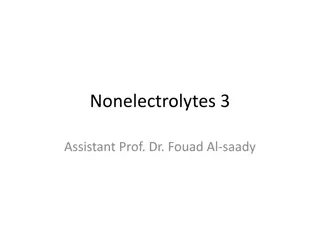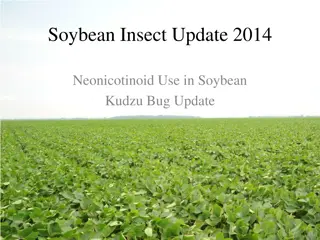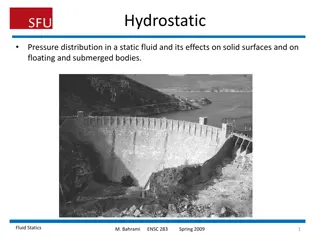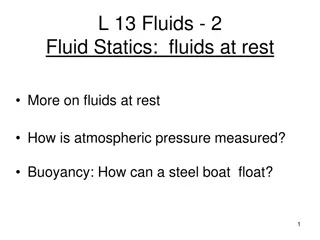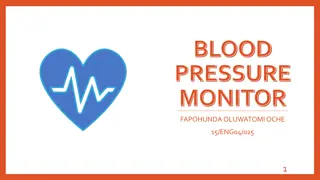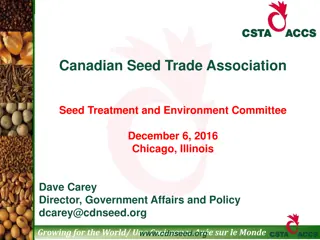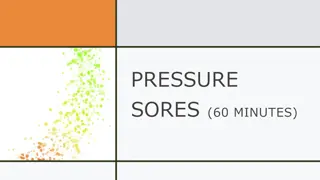Neonicotinoids Under Pressure
Assessing the impact of neonicotinoid pesticides on bee health, the White House Pollinator Initiative, EPA studies on seed treatments for soybean production, and efforts to enhance pollinator habitats. The debate over the benefits and drawbacks of neonicotinoids, concerns about limited data, calls for practical solutions to increase pollinator forage, and the need for collaboration between the seed industry and government agencies to promote seed treatment stewardship.
Download Presentation

Please find below an Image/Link to download the presentation.
The content on the website is provided AS IS for your information and personal use only. It may not be sold, licensed, or shared on other websites without obtaining consent from the author.If you encounter any issues during the download, it is possible that the publisher has removed the file from their server.
You are allowed to download the files provided on this website for personal or commercial use, subject to the condition that they are used lawfully. All files are the property of their respective owners.
The content on the website is provided AS IS for your information and personal use only. It may not be sold, licensed, or shared on other websites without obtaining consent from the author.
E N D
Presentation Transcript
Neonicotinoids Under Pressure White House Pollinator Initiative EPA to assess neonicotinoid pesticides for impact on bee health Saving America s Pollinators Act 73 co-sponsors in House EPA study Benefits of Neonicotinoid Seed Treatments to Soybean Production seed treatments provide negligible overall benefits to soybean production in most situations.
USDA EPA Study ASTA Comments Due December 22 Process is problematic Limited data set, why publish? Farmers not consulted Many benefits not considered Mischaracterized alternatives Restricting neonicotinoids will force growers to apply more insecticides Need more input from university extension
White House Pollinator Initiative Seed Related Provisions Strategies for developing affordable seed mixes Guidelines for using pollinator-friendly seed mixes in restoration and reclamation Increasing pollinator habitat on public lands Pollinator friendly plantings for landscape around federal buildings Reserve of native seed mixes for post-fire rehabilitation Increase pollinator habitat via USDA conservation programs Department of Transportation to increase pollinator habitat along roadways EPA to assess neonicotinoid pesticides for impact on bee health
ASTA Comments Practical solutions are needed to increase pollinator forage Regionally adapted and available seed Long-term cooperation is needed between seed industry, US and state government. High, quality and affordable seed Neonicotinoid seed treatments are an important tool for growers.
Guide to Seed Treatment Stewardship
Initiative Goals Conduct outreach and education to growers, pesticide applicators and seed treaters to demonstrate industry commitment to good stewardship
Seed treatments have been used for decades Farmers identify their particular risk factors and select appropriate seed treatments to address them.
Key Takeaways for 2014-2015 Benefits of seed treatment Improvements in technology Key stewardship steps
Plans for 2014-2015 Enhanced guide for specific audiences Continue outreach to growers, seed treaters and seed retailers through state associations Looking for speakers Spanish language version Portuguese version?
The industry is constantly evolving to improve processes Better application of the active ingredient Enhancing seed coating polymers New flow agents for use in planting equipment
Key Stewardship Principles for Farmers 1. Proper handling and storage practices for a pesticide treated product (see label). 2. When planting be aware of: pollinators and hives, flowering habitats, wind direction and speed. 3. Proper disposal of treated seed and empty seed containers. 4. Ensure no treated seed enters the commodity grain channels.
Key Stewardship Principles for Seed Treatment Applicators 1. Comply with all regulations for registered pesticide products and ensure proper employee training. 2. Establish written application protocols using best practices to ensure high quality seed treatment application to minimize dust-off. 3. Adopt stewardship documentation for the full life-cycle of seed treatment products.
Key Stewardship Principles for Seed Treatment Applicators (cont d) 4. Properly discard of treatment, treated seed and rinse water to minimize environmental impact. 5. Ensure that all required and pertinent seed treatment information is conveyed to customers through product labels and education.
http://seed-treatment-guide.com/ Guides Brochures Videos Links to regulations and other resources
